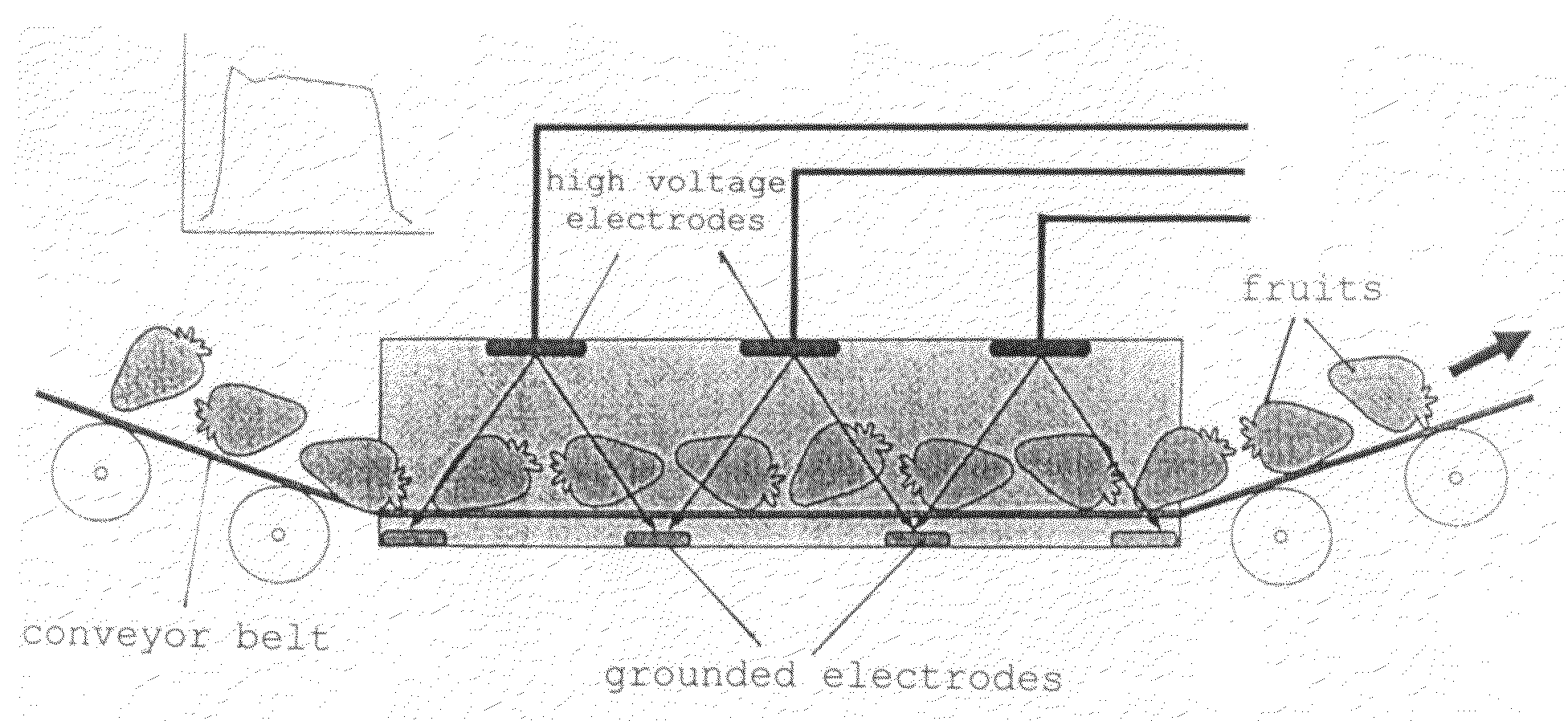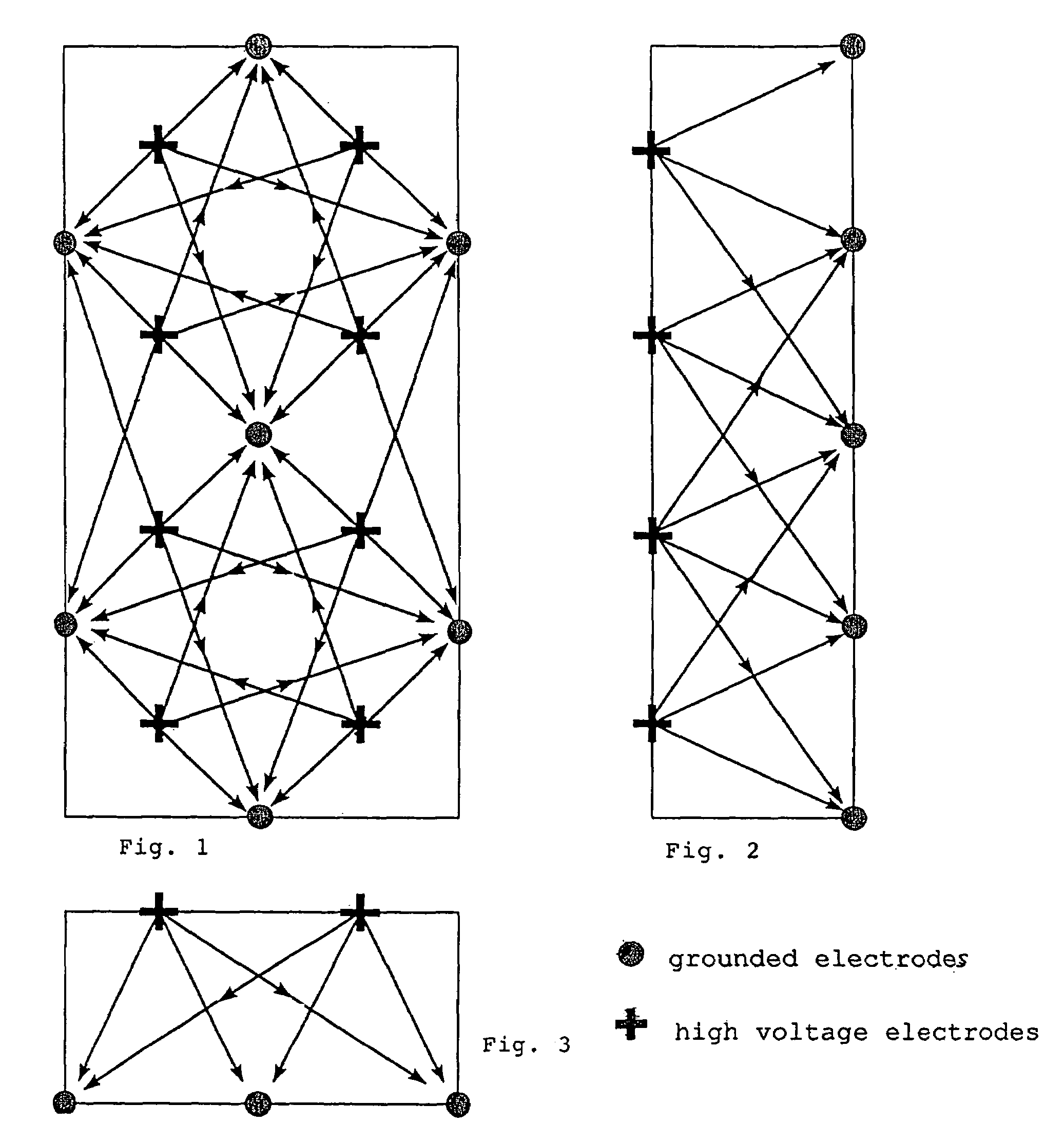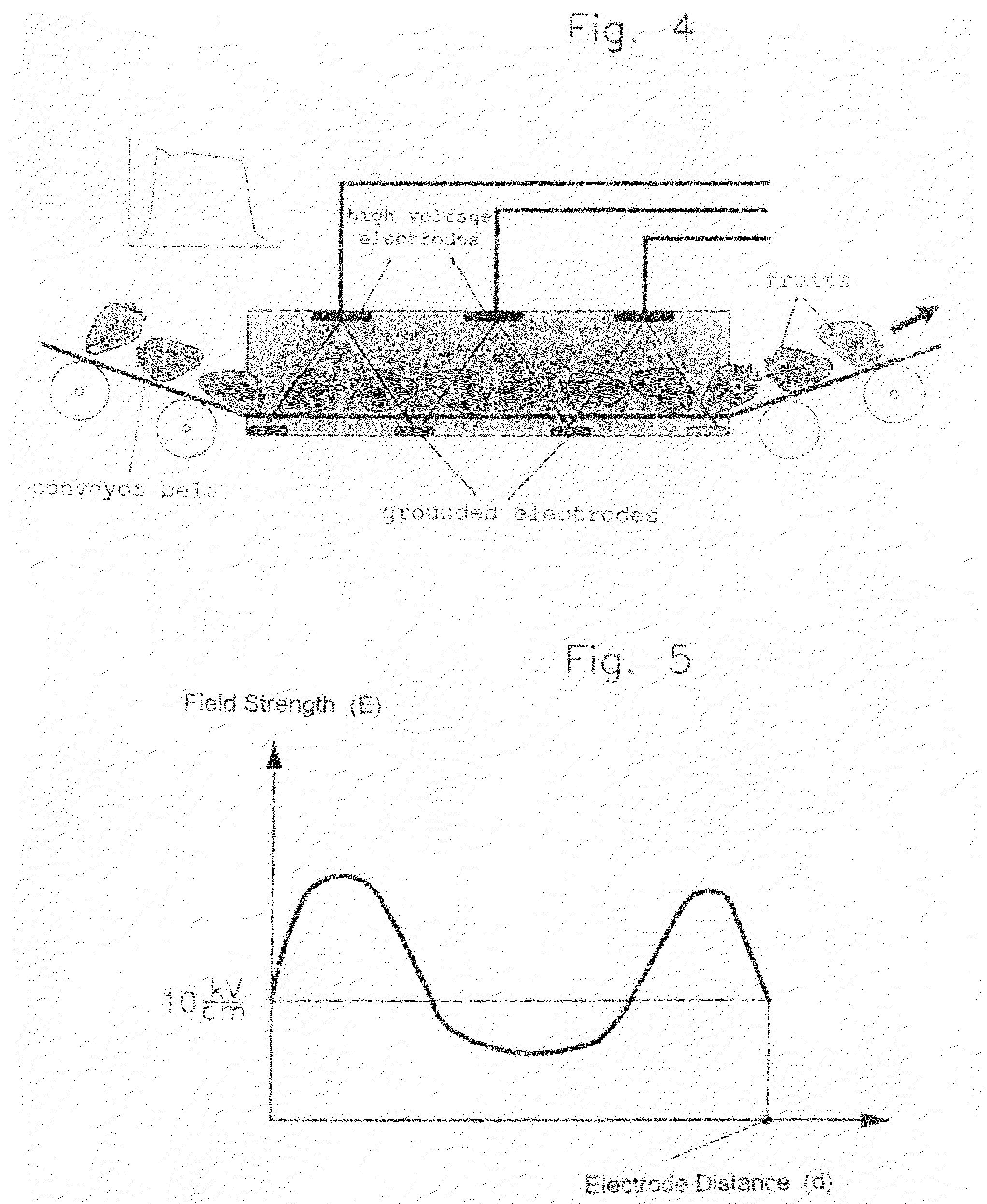Method and reactor for the non-thermal decomposition and pasteurization of organic process materials by electroporation
- Summary
- Abstract
- Description
- Claims
- Application Information
AI Technical Summary
Benefits of technology
Problems solved by technology
Method used
Image
Examples
Embodiment Construction
[0043]Measurements with beets, oriented on the electric field generated in the reactor have shown that the specific energy, based on a beet, of 8 kJ can be reduced to about 2 kJ / kg if all the cells are involved in the electroporation. In addition to the incomplete electroporation in a tube arrangement, also the transport of whole fruits in the tube was found to be disadvantageous, since canting and wedging of the process material may occur which results in blockages that must be manually eliminated. Therefore the present invention prefers a material transport wherein a continuous transport force is applied to the fruits as this occurs for example in connection with a chain conveyor.
[0044]The through-put of a chain conveyor is determined by the conveyor speed, the width, the height and the degree of filling. Depending on the biological cell material, the height of the conveyor is about 50 cm; the transport speed is so adjusted that the specific energy supplied by the high voltage pul...
PUM
| Property | Measurement | Unit |
|---|---|---|
| Time | aaaaa | aaaaa |
| Time | aaaaa | aaaaa |
| Electric potential / voltage | aaaaa | aaaaa |
Abstract
Description
Claims
Application Information
 Login to View More
Login to View More - R&D
- Intellectual Property
- Life Sciences
- Materials
- Tech Scout
- Unparalleled Data Quality
- Higher Quality Content
- 60% Fewer Hallucinations
Browse by: Latest US Patents, China's latest patents, Technical Efficacy Thesaurus, Application Domain, Technology Topic, Popular Technical Reports.
© 2025 PatSnap. All rights reserved.Legal|Privacy policy|Modern Slavery Act Transparency Statement|Sitemap|About US| Contact US: help@patsnap.com



